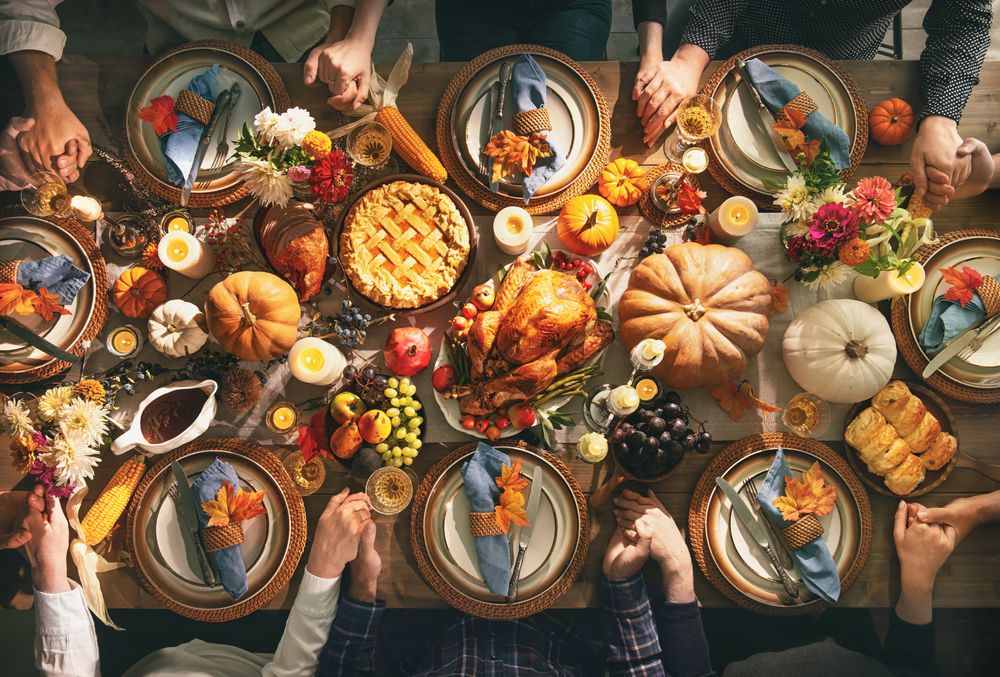
For most people, Thanksgiving is a holiday with fond memories of food and family gatherings. The real origins of the holiday are up for debate. Many Native Americans view Thanksgiving as a “day of mourning” rather than a celebration. Thanksgiving is remembered as the beginning of a genocide in which millions of Native Americans were killed as Europeans settled in America. As your family gears up for your annual Thanksgiving feast, think about how you can have a deeper connection to the holiday without whitewashing its origins.
Learn More About Native American Culture
Get a different perspective on Thanksgiving by seeking resources that present the Native American heritage. The Smithsonian has a great essay about how they celebrate Thanksgiving. National Geographic has some interesting lesson plans that give a Native American’s point of view on the first Thanksgiving. Read Native American authors, such as Joy Harjo, the 23rd Poet Laureate of the United States, who is a member of the Muskogee Nation. She is the first Native American recipient.
Visit Museums and Heritage Sites That Celebrate Native American Culture
Native American stereotypes and cultural appropriations hurt them. Unfortunately, many of these still appear in sports, schools and holiday decorations. Learning about their culture can help you understand why certain symbols are important and why you shouldn’t use them. Native American culture can be appreciated without appropriating it incorrectly.
Make Thanksgiving About Indigenous Foods
The foods that are served today at a traditional Thanksgiving feast are much different from what was served at what is considered the first Thanksgiving. The first settlers probably didn’t have mashed potatoes, sweet potato casserole or pumpkin pie. It’s likely they served turkey or another wild bird, but they probably brought a lot of seafood to the table. Beans, rice, squash and local fruits may have been served, but these were nothing like our modern traditions.
There’s no reason Thanksgiving can’t be about the food. To remember the Native American perspective, connect to local foods that are plentiful in the fall. Instead of a turkey, serve local fish or small game that might have been served hundreds of years ago. Serve produce grown locally. Support local agricultural businesses, especially those with Native American roots.
Keep in Mind Different Perspectives on Thanksgiving
The European settlers who came to America performed many atrocities against the indigenous peoples. Thanksgiving isn’t the only problematic holiday. Native Americans were not considered citizens of the United States until 1924. Even then, the federal government left it up to states to give Native Americans the right to vote. Utah was the last state to give them the opportunity to vote in 1964.
Sadly, we’re still learning about some of the horrors committed by the European settlers. In 2021, over 1300 bodies of First Nations’ children were discovered at some of Canada’s residential schools. There are many who wonder if the same thing could have happened in the United States. Native Americans were disenfranchised for centuries. It’s still a point of contention among many Native Americans. It’s important to think about this point of view while celebrating Thanksgiving. Not everyone thinks of Thanksgiving as a day of happiness and celebration, so be respectful of others’ beliefs.
Focus on Gratitude and Generosity
The first Thanksgiving isn’t as fuzzy and warm as most people have been led to believe. That doesn’t mean Thanksgiving should be banned. In 1863, President Abraham Lincoln declared the last day in November as a day of Thanksgiving after a crucial victory in the Civil War. The theme of Thanksgiving can be celebrating family and friends and remembering to give thanks for what you have. That’s something that most people can get behind.

